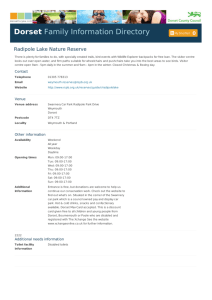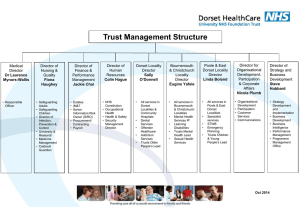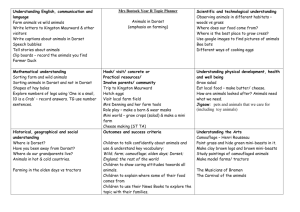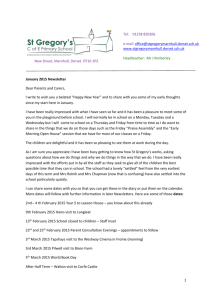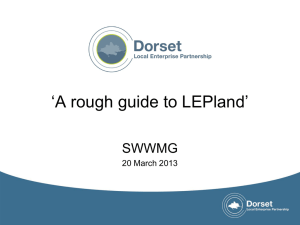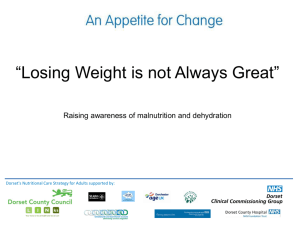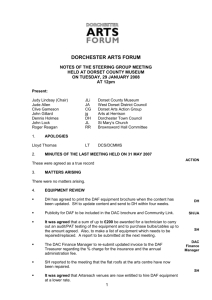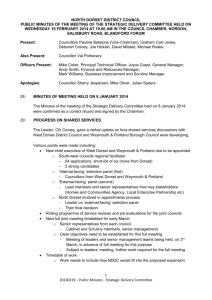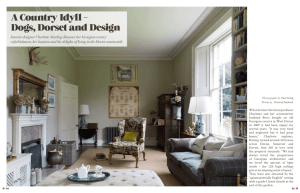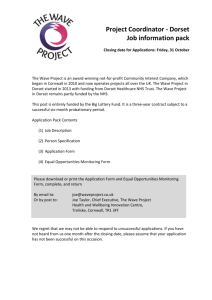A common approach to digital for Dorset
advertisement
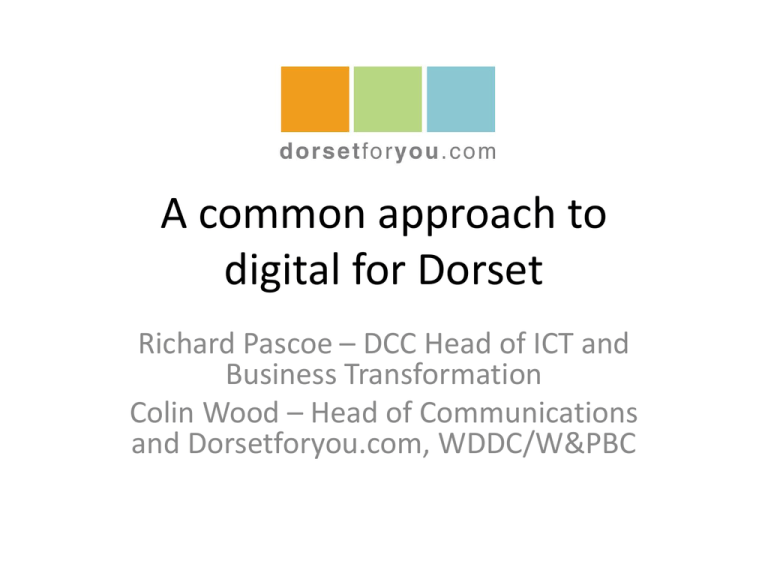
A common approach to digital for Dorset Richard Pascoe – DCC Head of ICT and Business Transformation Colin Wood – Head of Communications and Dorsetforyou.com, WDDC/W&PBC Partnership by default What is dorsetforyou.com? • • • • • • • Unique – a national first The website for all 7 councils in shire Dorset Unbranded access . . . branded delivery Small central web team – 5.5 staff 170 web authors across services Shared development plan/fund Social media It’s good because . . . • • • • • It makes sense to most normal people It’s cheap – 4p per visit vs 15p average Smaller councils do well A high profile brand Clout around opportunities, e.g. advertising, procurement • Joint marketing . . . site and digital activities The flip side • Some loss of individual branding • It’s a big site: o Had to make it local o Top tasks o Reduce number of web authors • Partnership working can be hard o Pace o Customer service ethos o Priorities o Money On balance . . . it works • Mix of 4 and 3 star in Socitm Better Connected 2014 • West Dorset District Council listed in top 20 best developed sites Legacy issues/lessons learned • A good idea poorly executed o Flawed navigation, no localisation o 15,000 pages and 21,000 pdfs o Poor search engine • Barriers to joining o Financial o Political o Perceptions Five years on we are still suffering! Dorset digital access strategy • Deliver range of digital services that customers prefer to use and that save public money • Use technology to improve council services • Ensure that, whilst we become digital by default, we don’t exclude those who cannot use online services Sits above and supports partners’ individual customer access and digital strategies The foundations • • • • Data collection – the baseline Eight customer personas Senior engagement sessions – 180 staff 40 staff from in-scope services created digital improvement plans • Agreed standards for new web apps easy to use, mobile friendly, accessible Meet Bob Aged 61 Marine engineer, Portland Careful with money, feel loyal to local community and takes pride in not being reliant on welfare benefits and state support. Demographic: “Residents of small and mid-sized towns with strong local roots (21.5%)”. Computer usage: When he has to for work. Channel preferences: Face to face/telephone. Web experience: Occasional use to keep in touch with family, book flights, etc. Digital success stories • Job applications - 99.5% submitted online • Garden waste applications – more than 50% online • School admission applications – 80% online • Bus timetables - £18,000 saving • E-newsletters - 70,000+ subscriptions in 6 months The big sell • • • • • • • Save time, go online Traditional comms Branded public terminals E-newsletters Customer service staff Automated messaging Promoting digital channels non digital • Big call to action buttons ahead of There’s more to do • Bold recommendations around digital transformation • Check quality of high volume web applications • A shared e-payments solution • More aggressive promotion of digital • Expand web chat – half the cost of phone • Measure, measure, measure The challenges • • • • Poor or no data Integrated – redesigning services Complete the mobile journey All digital channels o Telephone (IVR) o E-newsletters o Social media o Web chat • That digital divide – internal/external Superfast Dorset Questions?
